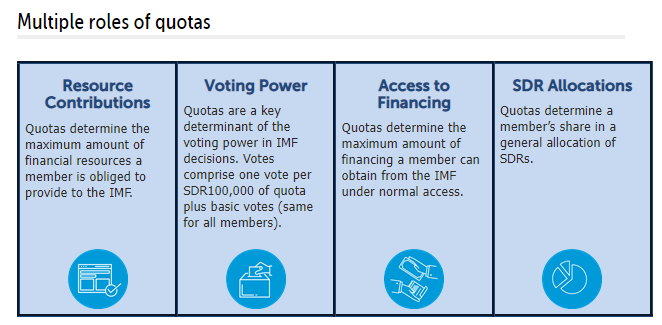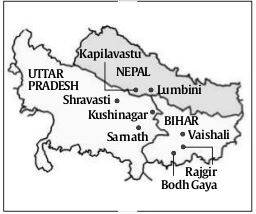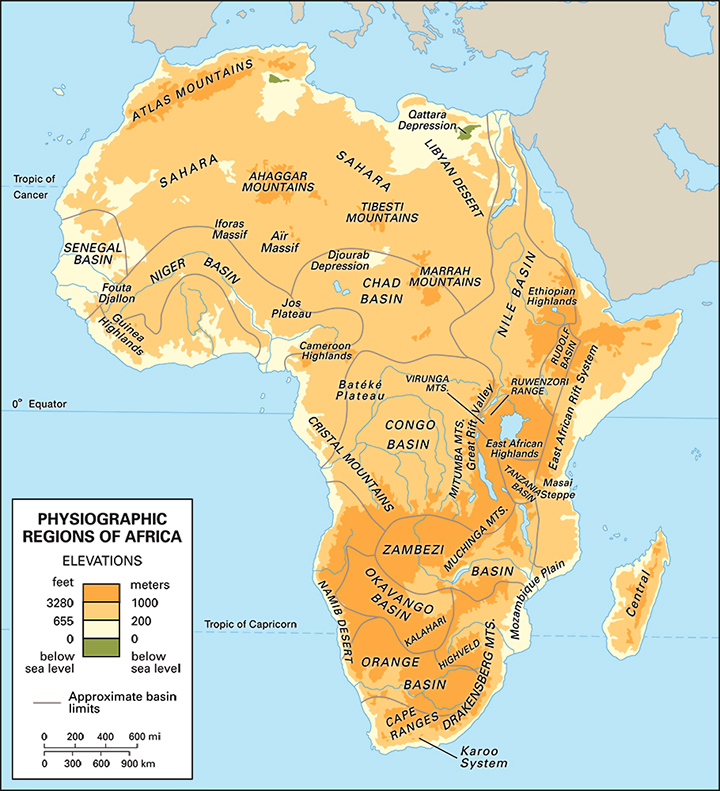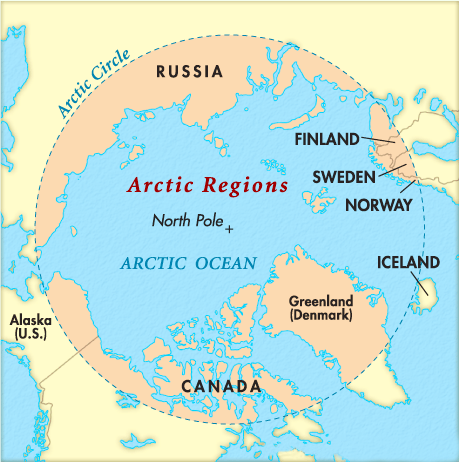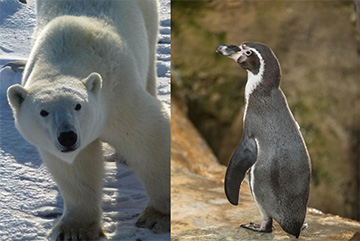International Relations
Review of IMF Role
Why in News
Recently, in the backdrop of the 2021 annual meetings of the World Bank Group and the International Monetary Fund (IMF), leading experts have suggested the need to review the role of the IMF.
- With a continuing trend of emerging markets increasing their share in global output or GDP, there is a need for review of the quota system.
- Apart from this, there is a need for maintaining data integrity amid the World Bank discontinuing its Ease of Doing Business reports.
- The IMF was set up along with the World Bank after the Second World War to assist in the reconstruction of war-ravaged countries. The two organisations were agreed to be set up at a conference in Bretton Woods in the US. Hence, they are known as the Bretton Woods twins.
Key Points
- Need for IMF Reforms:
- Quota Reforms:
- The IMF's quota system was created to raise funds for loans.
- Each IMF member country is assigned a quota, or contribution, that reflects the country's relative size in the global economy. Each member's quota also determines its relative voting power as well as its borrowing capacity.
- This makes wealthy countries have more say in the making and revision of rules.
- This leads to the problem where countries that grow economically have tended to become under-represented as their voting power lags behind. For eg: BRICS countries.
- Quotas are denominated in Special Drawing Rights (SDRs), the IMF’s unit of account.
- SDR is a potential claim on the freely usable currencies of IMF members. SDRs can be exchanged for these currencies.
- The IMF's Board of Governors conducts general reviews of quotas at regular intervals (no more than five years apart).
- Quota Reforms:
Earlier Quota Reforms
- In 2010, the IMF’s Quota and Governance Reforms were drafted; which finally became effective in 2016.
- These reforms shifted more than 6% of the quota shares to emerging and developing countries from the US and European countries.
- Under this, India’s voting rights increased by 0.3% from then 2.3% to 2.6% and China’s voting rights increased by 2.2% from then 3.8% to 6%.
- Presently, India holds 2.75% of SDR quota, and 2.63% of votes in the IMF.
- Restructuring of the Article IV Consultations: Under Article IV consultations, the IMF holds bilateral discussions with its members usually every year and its staff prepares a report.
- Article IV consultation is the most powerful instrument and it needs to be restructured and sharpened to make it more useful by using the new technologies and access to public data.
Proposed Reforms
- Refroming Quota System: The quota reform would reflect the changed economic realities, especially with regard to the increasing capabilities of the developing nations.
- For example, the quota of BRICS countries should increase and that of European Union Countries should decrease.
- Also, it is important that the new quota formula give more weight to PPP GDP to better reflect the true economic strength of emerging markets and developing economies.
Purchasing Power Parity
- PPP is a popular metric used by macroeconomic analysis that compares different countries' currencies through a "basket of goods" approach.
- PPP allows for economists to compare economic productivity and standards of living between countries.
- Some countries adjust their Gross Domestic Product (GDP) figures to reflect PPP.
- Helping Lower Income Countries: The IMF should focus on lower income countries and support other developing countries’ market funds raising activities, as its Article IV consultation reports are utilised by credit rating agencies, impacting the fund raising capacity of countries like India.
- Most of the Asian countries including India can now raise funds on their own on the basis of strength of their forex reserves, and do not have to necessarily go to the IMF like in the past to tide of crisis.
- Management Reforms: The management system in the IMF should be modified.
- In the IMF and World Bank group, there is an informal arrangement, that the head of the IMF should be a European and the head of the World Bank should be an American.
- The time has come to reconsider this, and the IMF probably should really rethink it.
Social Justice
Global Food Security Index 2021
Why in News
India is ranked at 71st position in the Global Food Security (GFS) Index 2021 of 113 countries.
- Earlier, India was ranked 101st position in the Global Hunger Index (GHI) 2021.
Key Points
- About the Index:
- Developed by:
- The GFS Index was designed and constructed by London-based Economist Impact and is sponsored by Corteva Agriscience.
- The 2021 GFSI is the tenth edition of the index. It is published every year.
- Calculation:
- It measures the underlying drivers of food security based on the following factors:
- Affordability
- Availability
- Quality and Safety
- Natural Resources and Resilience
- It considers 58 unique food security indicators including income and economic inequality - calling attention to systemic gaps and actions needed to accelerate progress toward United Nations Sustainable Development Goal of Zero Hunger by 2030.
- It measures the underlying drivers of food security based on the following factors:
- Developed by:
- Findings of the Report (India and World):
- Top Rankers:
- Ireland, Austria, the UK, Finland, Switzerland, the Netherlands, Canada, Japan, France and the US shared the top rank with the overall GFS score in the range of 77.8 and 80 points on the index.
- India’s Rank:
- Overall Position: India held 71st position with an overall score of 57.2 points on the GFS Index 2021 of 113 countries
- In Comparison to Neighbouring Countries: It fared better than Pakistan (75th position), Sri Lanka (77th Position), Nepal (79th position) and Bangladesh (84th position). But the country was way behind China (34th position).
- However, over the past 10 years, India’s incremental gains in overall food security score were lagging behind that of Pakistan, Nepal and Bangladesh.
- India’s score improved only by 2.7 points to 57.2 in 2021 from 54.5 in 2012 when compared with Pakistan by 9 points (to 54.7 in 2021 from 45.7 in 2012).
- However, over the past 10 years, India’s incremental gains in overall food security score were lagging behind that of Pakistan, Nepal and Bangladesh.
- Pakistan scored better than India in the food affordability category and Sri Lanka was even better. On the remaining 3 factors, India scored better than Pakistan, Nepal, Bangladesh and Sri Lanka.
- Top Rankers:
- Concerns:
- Global food security has decreased for the second year in a row after seven years of progress towards the Sustainable Development Goal of achieving zero hunger by 2030.
- While countries have made significant strides toward addressing food insecurity in the past ten years, food systems remain vulnerable to economic, climatic, and geopolitical shocks.
- Suggestions:
- Action is imperative at all levels–local, national, and global–to end hunger and malnourishment and ensure food security for all.
- To meet these present and emerging future challenges requires that investments in food security are sustained – from innovation in climate-resilient crop yields to investing in programs to assist the most vulnerable.
- Related Government Initiatives:
Indian Heritage & Culture
Kushinagar International Airport
Why in News
The Kushinagar Airport in Uttar Pradesh is the latest entrant in India's list of international Airports. The airport is expected to provide seamless connectivity to people from South east and East Asian countries for Buddhist Pilgrimage Tourism.
- Kushinagar is the centre of the Buddhist circuit, which consists of pilgrimage sites at Lumbini, Sarnath, Gaya and others.
Key Points
- Kushinagar Airport and Cultural Diplomacy:
- The inauguration of Kushinagar International airport is set to be a landmark in the India-Sri Lanka relations.
- On the occasion of Aiprort’s inauguration, Sri Lanka will present to India photographs of two mural paintings:
- One Mural Painting shows Arahat Bhikkhu’ Mahinda, son of Emperor Ashoka delivering the message of the Buddha to King Devanampiyatissa of Sri Lanka.
- The other shows the arrival of ‘Theri Bhikkhuni’ Sanghamitta, the daughter of the Emperor, in Sri Lanka, bearing a sapling of the ‘sacred Bodhi tree’ under which Siddhārtha Gautama is believed to have attained enlightenment.
- The Buddhist circuit reflects the use of soft power in India's foreign policy.
- The emphasis on Buddhist diplomacy, will help counter increasing Chinese influence in Sri Lanka and improve people to people relations (especially in the context of the aftermath of Sri-lankan Civil War).
- Further, the Buddhist faith, due to its emphasis on peaceful co-existence and its wide pan-Asian presence, lends itself well to soft-power diplomacy.
Spread of Buddhism in Sri Lanka
- Buddhism was first brought to Sri Lanka by a mission sent out from eastern India during the reign of the Mauryan emperor Ashoka (c. 273–232 BCE).
- The leader of the mission to Sri Lanka, Mahendra (Mahinda), is described as Ashoka’s son.
- About Buddhist Circuit:
- In 2014-15, the Ministry of Tourism launched the Swadesh Darshan scheme with a vision to develop theme-based tourist circuits on the principles of high tourist value.
- The Ministry has identified Buddhist Circuit as one of the fifteen thematic circuits for development under the scheme.
- The Buddhist circuit is a route that follows in the footsteps of the Buddha from Lumbini in Nepal to Kushinagar in Uttar Pradesh in India, where he died.
- Buddhist pilgrims consider Kushinagar a sacred site where, they believe, Gautama Buddha delivered his last sermon and attained ‘Mahaparinirvana’ or salvation.
- Investing in the Buddhist Circuit is the result of first-time collaboration between the Government of India’s Ministry of Tourism, the State Governments of Bihar and Uttar Pradesh, the private sector, Buddhist monasteries and sects, and the World Bank Group.
- In 2014-15, the Ministry of Tourism launched the Swadesh Darshan scheme with a vision to develop theme-based tourist circuits on the principles of high tourist value.
Buddhist Circuit
- Other Initiatives Taken to Promote Buddhist Sites:
- PRASHAD Scheme: 30 projects for development of infrastructure have been undertaken under the PRASHAD Scheme.
- Iconic Tourist Sites: Buddhist Sites at Bodhgaya, Ajanta & Ellora have been identified to be developed as Iconic Tourist Sites.
- Buddhist Conclave: It is organised every alternate year with the objective of promoting India as a Buddhist Destination and major markets around the globe.
- Diversity of Languages: Signages have been installed in Chinese language at buddhist monuments in Uttar Pradesh and in Sinhala language (official language of Sri Lanka) at Sanchi monuments in Madhya Pradesh.
Buddha Path
- Buddha was born in 563 BC at Lumbini, in Nepal.
- He preached that one should avoid the excess of both luxury and austerity. He advocated the “madhyam marg” (middle path).
- The eight-fold path (extraorbdinary Teachings of the Buddha) comprised the following:
- Right view.
- Right resource.
- Right speech.
- Right conduct.
- Right livelihood.
- Right effort.
- Right mindfulness.
- Right concentration.
- The ‘Buddha Path’ also refers to the Eight Great Places of Buddhist Heritage (referred in Pali as Aṭṭhamahāṭhānāni). They are:
- Lumbini (Nepal)- Buddha was born.
- Bodh Gaya (Bihar)- Attained enlightenment.
- Sarnath (Varanasi, U.P.)- First sermon.
- Kushinagar (Gorakhpur, U.P.)- Buddha died.
- Rajgir (Bihar)- Where the Lord tamed a mad elephant.
- Vaishali (Bihar)- Where a monkey offered honey to him.
- Sravasti (U.P)- The Lord took his seat on a thousand petaled lotus and created multiple representations of himself.
- Sankasya (Farrukhabad, Uttar Pradesh)- He descended from heaven.
Governance
PM’s 60-Point Action Plan
Why in News
Recently, the Centre has prepared a comprehensive 60-point action plan.
- The action plan is targeted at specific ministries and departments, but a closer analysis suggests they fall under broadly three buckets: leveraging IT and technology for governance, improving business climate, and upgrading the civil services.
Key Points
- Leveraging IT and Technology for Governance:
- There are several actionable inputs for the Ministry of Electronics and Information Technology from streamlining disbursement of scholarships to bridging digital divide for underprivileged students by developing indigenous tablets and laptops.
- Digitising all land records by 2023 under the central database called ‘Matribhumi.’ Integration with e-Courts system will provide transparency on title/possession related issues.
- Citizenship may be linked to birth certificates through technology and mainstreamed.
- Improving Business Climate:
- It includes doing away completely with certain permissions, reducing the cost of starting a business in 10 sectors and bringing it on a par with Vietnam and Indonesia, automatic notification of clearances, single-point access to all government services.
- Incentives to states for timely land acquisition and forest clearances, one comprehensive Environment Management Act that subsumes various laws in the sector.
- Mentoring platform for start-ups and skilling programmes for emerging sectors.
- Using Geographic Information System (GIS) mapping for decision making to increase the country’s GDP (Gross Domestic Product).
- Pushing for jobs while negotiating trade pacts.
- Upgrading the Civil Services:
- Capacity building (Mission Karamyogi) - training of officers on various aspects of infrastructure in both the Centre and states, infusion of expertise and exposure to latest technologies for higher civil services.
- Performance-based working, clear and specific targets for ministries and departments just like that for public sector undertakings, institutional mechanisms for addressing issues of states given their limited capacities and restructuring of departments through Government Process Re-engineering (GPR) every 10 years.
- GPR is undertaken to address ‘problems’ or ‘needs’ of the organization or its customers with an objective to improve the overall quality of the services.
- Appointment of more Chief Information Officers (CIOs) and Chief Technology Officers (CTOs) as data is not being used efficiently. All government data should be made accessible to all ministries.
- Other Agendas:
- NITI Aayog has also been asked to target poverty eradication within five years.
- Asks the Ministry of Housing and Urban Affairs to ab initio plan residential facilities for service staff engaged in construction to prevent formation of slums.
- Using Aadhaar for “bringing together beneficiary oriented schemes of different ministries” and also adds that a ‘family database design’ has been developed by the Ministry of Social Justice and Empowerment and “may be promoted like Aadhaar.”
- Directs the culture and tourism ministries to identify and develop 100-200 iconic structures and sites.
- “Centres of excellence” may be set up in rural areas through PPP (Public Private Partnership), taking a cue from such centres in Singapore.
Economy
Economic Slowdown in China
Why in News
Recently, China’s National Bureau of Statistics has reported that third-quarter Gross Domestic Product (GDP) growth has slowed to 4.9%.
- There are concerns that a slowing Chinese economy could impact the incipient global recovery and regional economies like India as well.
Key Points
- Reasons for Slowdown in Growth:
- Base Effect: China did well in reviving economic growth after the Covid-19 pandemic. Therefore, the reference point of higher levels of growth rate in the previous quarter is resulting in a lower growth rate.
- China is going through a ‘mature’ stage of economic development i.e. an economy which has witnessed a double digit growth for two decades is bound to face a slowdown.
- The base effect refers to the effect that the choice of a basis of comparison or reference can have on the result of the comparison between data points.
- Fuel/Power Crisis: A surge in coal prices and a resultant electricity shortage prompted provincial governments to cut power supplies.
- This fuel/power crisis in China continues to affect factories and units across the country’s industrial heartland in its south east have had to curtail output.
- Turmoil in the Real Estate Sector: The Real Estate Sector which accounts for about a quarter of China’s GDP, is now beginning to show signs of perceptible slowdown.
- The reason for this slowdown can be primarily attributed to the Evergrande fiasco.
- Evergrande Group is a real estate giant in China, which is struggling to avoid defaulting on billions of dollars owed to bond holders.
- Base Effect: China did well in reviving economic growth after the Covid-19 pandemic. Therefore, the reference point of higher levels of growth rate in the previous quarter is resulting in a lower growth rate.
About Evergrande Crisis
- The real estate sector, led by Evergrande, was the main driver of the post-pandemic Chinese economic recovery.
- However, progressive slowing down of China’s property market and reduced demand for new houses adversely impacted its cash flows.
- This has led to a condition where nearly three quarters of the country’s household wealth is locked up in housing.
- Any collapse at the biggest real estate company could have a serious knock-on effect on the entire economy, and potentially setting off a cascading impact on the global commodities and financial markets.
- However, several economists say the threat to global financial markets is small.
- Impact on Global Economy:
- Impending Global Recovery: China’s control of pandemic and restarting its industries has played an instrumental role in the post-pandemic global economic recovery.
- The Chinese economy falling into systemic risks could lead to overall loss of momentum to the global post-pandemic economic recovery.
- Impact of Trade War: US-China trade war, has resulted in slowdown in Chinese exports resulting in losses for the countries (especially South Asian Countries) that depend on China for ‘Supply Value Chain’ for producing components and other finished goods.
- Impending Global Recovery: China’s control of pandemic and restarting its industries has played an instrumental role in the post-pandemic global economic recovery.
- Impact on India:
- Imports: India’s bilateral trade with China has grown nearly 50% in the first nine months of 2021.
- Further, India depends majorly on imports from China including smartphones and automobile components, telecom equipment, active pharmaceutical ingredients, and other chemicals.
- Thus, slowing the Indian economy will have an impact on India’s consumer market and infrastructure development.
- Exports: Further, India’s buoyant iron ore exports, much of which is headed to China, could also see an impact if the twin crises in China triggers an extended slowdown in the Chinese real estate market.
- Investments: Slowing Chinese economy can trigger an investment outflow from India. If India can expedite the economic reforms, it can become the next global manufacturing hub.
- Imports: India’s bilateral trade with China has grown nearly 50% in the first nine months of 2021.
Recent Economic Reforms in India
Way Forward
Apart from carrying out economic reforms, India should go for import diversification from China, develop export competitiveness, and become part of global supply chains.
Biodiversity & Environment
Disappearing African Rare Glaciers
Why in News
Recently, a report from the World Meteorological Organisation (WMO) stated that Africa's rare glaciers will disappear in the next two decades due to climate change.
- Their current retreat rates are higher than the global average. If this continues, it will lead to total de-glaciation by the 2040s.
- WMO is one of the specialized agencies of the United Nations (UN). It produces annually the State of the Global Climate Report.
Key Points
- Highlights of the Report:
- Africa is the continent that contributes least to global warming yet it is going to suffer the most.
- While African nations contribute less than 4% of global greenhouse gas emissions, the report underscored the outsize impact that changes in the climate are having on the continent’s 1.3 billion people.
- The last three mountain glaciers in Africa (Mount Kilimanjaro (Tanzania), Mount Kenya (Kenya) and the Ruwenzori Mountains (Uganda)) are receding at such a rapid pace that they could disappear within two decades.
- In sub-Saharan Africa, climate change could further lower gross domestic product by up to 3% by 2050.
- The cost of adapting to climate change in Africa will rise to $50 billion per year by 2050.
- The Indian Ocean island nation of Madagascar is one where “famine-like conditions” have been driven by climate change.
- The parts of South Sudan are seeing the worst flooding in almost 60 years.
- Further, massive displacement, hunger and increasing climate shocks such droughts and flooding are expected to increase in the future.
- This is having a major impact on disaster warnings for millions of people in Africa.
- Africa is the continent that contributes least to global warming yet it is going to suffer the most.
- Deglaciation:
- About:
- Glaciers, ice caps and continental ice sheets cover some 10% of the earth’s land surface at the present time, whereas during the ice ages, they covered about three times this amount.
- The present ice cover corresponds to about three-quarter of the world’s total freshwater resources.
- The gradual melting away of a glacier from the surface of a landmass is known as Deglaciation.
- The processes that remove snow, ice, and moraine from a glacier or ice sheet are called Ablation. It includes melting, evaporation, erosion, and calving.
- The process of deglaciation, which intensified in the 20th century, is leaving the planet iceless.
- Glaciers, ice caps and continental ice sheets cover some 10% of the earth’s land surface at the present time, whereas during the ice ages, they covered about three times this amount.
- Causes of Deglaciation:
- Global Warming: The atmospheric concentration of carbon dioxide, methane and other greenhouse gases (GHGs) produced by industry, transport, deforestation and burning fossil fuels, amongst other human activities, warm the planet and cause glaciers to melt.
- Ocean Warming: Oceans absorb 90% of the Earth's warmth, and this affects the melting of marine glaciers, which are mostly located near the poles.
- Rapid Industrialisation: Since the early 1900s, many glaciers around the world have been rapidly melting, specifically, since the industrial revolution, carbon dioxide and other greenhouse gas emissions have raised temperatures, even higher in the poles, and as a result, glaciers are rapidly melting, calving off into the sea and retreating on land.
- About:
Way Forward
- Increasing African Representation: Despite the threats ahead to the African continent, the voices of Africans have been less represented than richer regions at global climate summits like in IPCC reports.
- Thus, there is a need to increase African participation in all multilateral climate change negotiations.
- Mobilising Climate Finance: Overall, Africa will need investments of over $3 trillion in mitigation and adaptation by 2030 to implement its national climate plan.
- It will require significant, accessible and predictable inflows of green financing in Africa.
Biodiversity & Environment
Decreasing Ice and Its Impact: Arctic
Why in News
According to a recent study, if carbon emissions continue at current levels, summer ice in the arctic will disappear by 2100 and, along with it, creatures such as seals and polar bears.
- The Arctic sea ice reached its minimum extent, coming in at 4.72 million square miles. It is the 12th lowest on record and the record minimum melting of the ice occurred in 2012.
Key Points
- About the Study:
- Coverage:
- The study covers a 1 million-sq km region north of Greenland and the coasts of the Canadian Archipelago, where sea ice has traditionally been thickest round the year, and thus likely to be most resilient.
- Two Scenarios:
- Optimistic\Low Emissions (if carbon emissions are brought in check): Under this scenario, some summer ice could persist indefinitely.
- Pessimistic\High Emissions (if emissions continue as they are): Under this scenario, summer ice would disappear by the end of the century.
- Ice from even the central Arctic will decrease by mid-century, and will no longer endure through the year.
- Locally formed summer ice will persist in what is known as the Last Ice Area, but will now be only a metre thick.
- Coverage:
- Implications:
- Low-emissions Scenario:
- At least some seals, bears and other creatures may survive.
- These species currently exist under similar summer conditions along western Alaska and parts of Hudson Bay.
- At least some seals, bears and other creatures may survive.
- Higher-Emissions Scenario:
- By 2100, even the locally formed ice will disappear in summer.
- With no summer ice anywhere, there will be no ice-dependent ecosystems.
- Low-emissions Scenario:
Arctic
- The Arctic is a polar region located at the northernmost part of Earth. Land within the Arctic region has seasonally varying snow and ice cover.
- It consists of the Arctic Ocean, adjacent seas, and parts of Alaska (United States), Canada, Finland, Greenland (Denmark), Iceland, Norway, Russia, and Sweden.
- Since 2013, India has had observer status in the Arctic Council, which is the predominant inter-governmental forum for cooperation on the environmental and development aspects of the Arctic.
Sea Ice
- About:
- Sea ice is frozen seawater that floats on the ocean surface. It covers about 7% of the Earth's surface and about 12% of the world's oceans..
- This floating ice has a profound influence on the polar environment, influencing ocean circulation, weather, and regional climate.
Interesting Fact
- About:
- Penguins live in Antarctica (to the south), and polar bears live in the Arctic (to the north).
- While they inhabit similar polar habitats with lots of snow and ice, they have never lived together.
- Reasons for No Polar Bear in Antarctica:
- The main reasons there are no polar bears in Antarctica are evolution, location and climate.
- Bears evolved on the planet after Antarctica broke away (Plate Tectonics) from the other continents, and after that they had no easy way of getting there.
- The main reasons there are no polar bears in Antarctica are evolution, location and climate.
- Reasons for No Penguins in Arctic:
- In the North Pole, predators such as polar bears and arctic foxes would limit their survival.
- There is no water in the north pole for them to hunt because the ice is so thick.
- Even if there was a hole in the ice, how would the penguin get back up if they can't find the hole they went down in.
- Penguins are predominately shore birds and thus do not venture far into the ocean.
- In addition, migrating through warmer waters to reach the northern hemisphere is almost impossible for penguins and could prove fatal.
Indian Heritage & Culture
Bhaskarabda: A Luni-Solar Calendar
Why in News
Recently, the Assam Government has announced that Bhaskarabda, a Luni-Solar Calendar will be used as an official calendar.
- Presently, the official calendar of Assam government makes use of the Saka calendar and the Gregorian calendar.
- However, the Bhaskarabda calendar will also be used from now onwards.
Key Points
- About:
- Bhaskarabda, an era counted from the date of the ascension of a 7th-century local ruler Bhaskar Varman.
- It is based on both the phases of the moon and the solar year.
- It began when Bhaskaravarman was crowned ruler of the Kamrupa kingdom.
- He was a contemporary and political ally of northern Indian ruler Harshavardhana.
- The gap between Bhaskarabda and Gregorian is 593 years.
- Type of Calendars:
- Solar:
- Any dating system based on the seasonal year of approximately 365 1/4 days, the time it takes the Earth to revolve once around the Sun.
- Lunar:
- Any dating system based on a year consisting of synodic months—i.e., complete cycles of phases of the Moon.
- Luni-Solar:
- In the lunisolar calendar months are lunar but years are solar, it was used in the early civilizations of the whole Middle East and in Greece.
- Solar:
- Bhaskarvarman (600–650):
- He belonged to the Varman dynasty and was the ruler of Kamarupa Kingdom.
- Kamarupa was one of the most advanced kingdoms in India under Bhaskaravarman. Kamarupa was the first historical kingdom of Assam.
- His name has been immortalised in the accounts of the Chinese Buddhist pilgrim, Xuanzang, who visited Kamarupa during his reign.
- He is known for his alliance with Harshavardhana against Shashanka, the first major ruler of Bengal (Karnasuvarna).
- He belonged to the Varman dynasty and was the ruler of Kamarupa Kingdom.
| Classification of calendars in India | |||
| Vikram Samvat (Hindu lunar calendar) |
|
||
| Saka Samvat (Hindu Solar calendar) |
|
||
| Hijri calendar (Islamic lunar calendar) |
|
||
| Gregorian calendar (Scientific solar calendar) |
|
||

